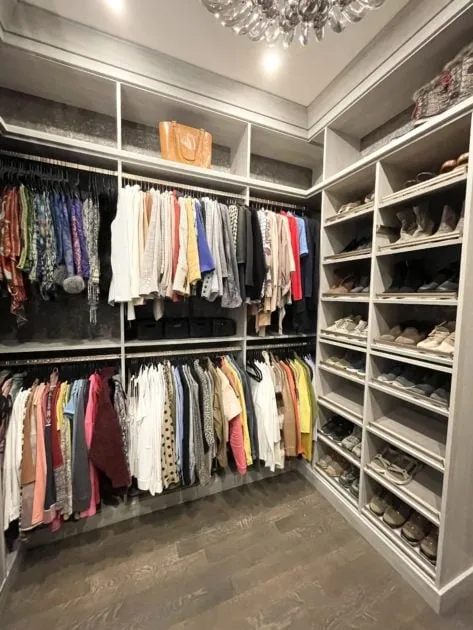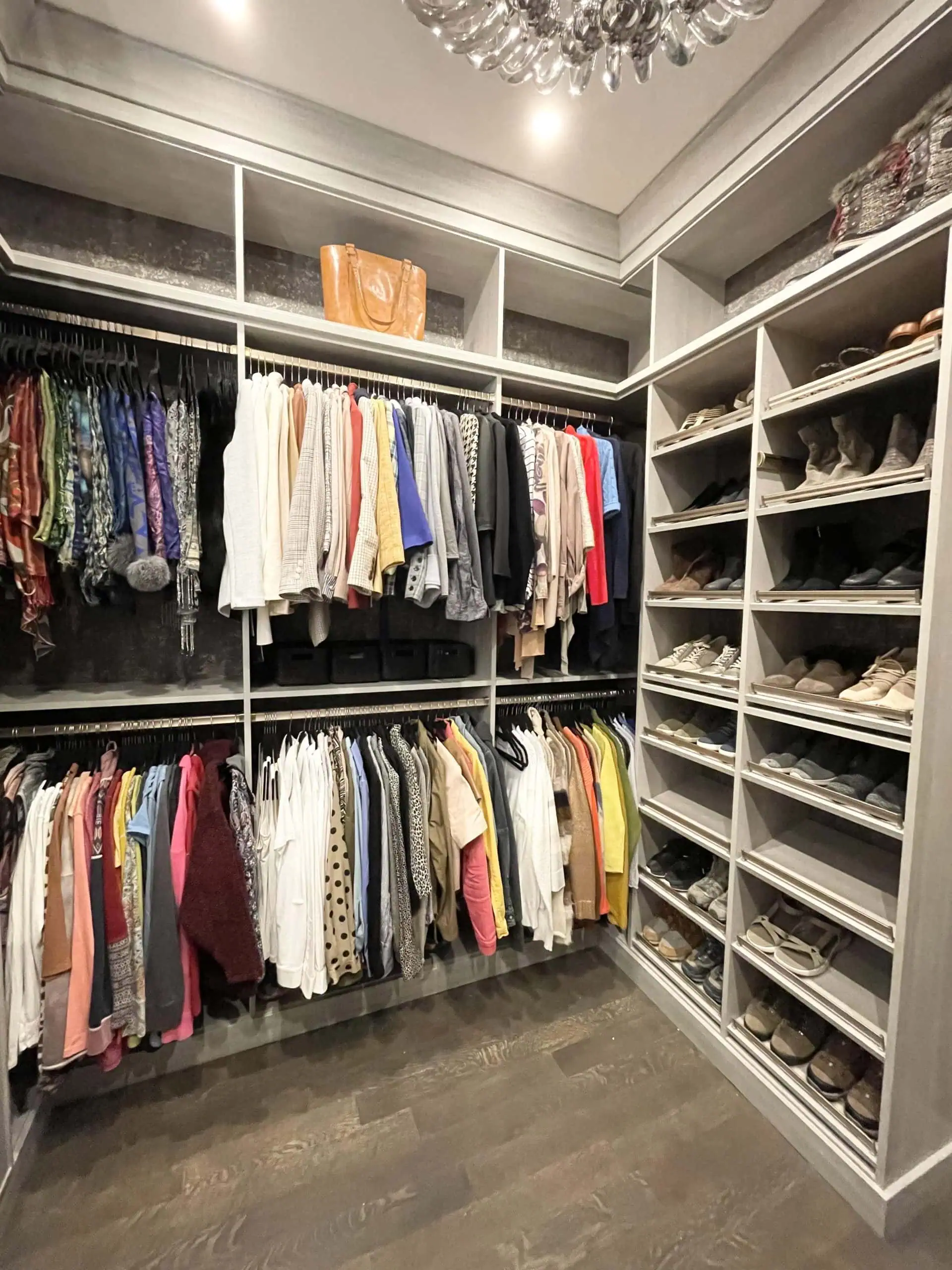I’ve been in this industry for the last 12 years, and in that time I’ve been asked so many different questions regarding the organizational process. Here are just 5 of the most common questions I get asked:
1. Where do I start?
2. How do I know if I should be keeping more or less stuff?
3. How do you make a system in the home?
4. How do I get my family on board with organizing and maintaining a space?
5. What do I do with gifts that I have been given but no longer want?
1. Where do I start?
1. Set a goal
Goals should start small and achievable. Don’t set out to clear out your entire house in a day. Start with a small space within one room (a drawer, a cabinet, a closet). As you complete one small area, the satisfaction of accomplishing a task will snowball into motivating you to keep going with more spaces and larger areas.
2. Make a plan
Intensionality is key. One of my favorite instagram influencers coined the phrase, “Mid-Project Regret Syndrome”. Blindly going into a project will not only overwhelm but ultimately lead to burn out and further despair. Pre-determine when and for how long you will work on your project.
3. Sort into categories
Categorizing every item that you’ve pulled out is key! Start with broad categories – electronics, baking, decor, etc. Once everything is sorted into categories, take one pile at a time and further separate out the items into smaller groupings. For example, electronics may not be divided up by headphones, computer cords, adapters, extension cords, etc.
4. Declutter
Once all of your items have been divided up into small categories, it is time to purge. Do you have duplicates? Do you really need 10 pairs of scissors or five different whisks? Narrow the categories down to your absolute favorite items. A point to remember here, especially when organizing a kitchen or medicine cabinet, is pay attention to expiration dates. Toss all expired items. If it’s expired, you clearly don’t use it enough for it to warrant taking up space in your home.
5. Organize what’s left
You’ve pulled everything out, categorized like items, and purged duplicates and unused products. Now it’s time to put it all away. Choose bins that will appropriately fit the different category sizes. Measure shelves and cabinet depths to maximize your space. And don’t forget to LABEL EVERYTHING!
2. How do I know if I should be keeping more or less stuff?
As a general rule of thumb – if you are asking this question, you are keeping too much. It’s that simple. Possessions weigh us down in the form of debt. Emotionally, they weigh us down in the form of attachment. Owning things comes at a price. The real question is often not whether you have too much, but rather where do I begin to eliminate the clutter that I know is taking up space in my life.
Start by asking yourself intentional questions:
1. How often do I use this?
2. If this item were lost, would I be stressed about locating it?
3. How easily replaceable is this item?
One of my favorite quotes says,
“The world asks how can I get more, but the true question to ask ourselves is, how can I have less to cultivate contentment?” – Amelia Thatcher
True contentment doesn’t come from our material possessions. There is peace in filling a space with only that which brings you true joy.
3. How do I make a system in my home?
I often come across clients who have “organized” a space, however it was done out of urgency rather than with a thorough plan or goal. This is when major steps get missed, such as decluttering. If we slow down to think about the purpose of that space and create an intentional plan as to how best to achieve that goal, this is where true lasting systems are formed. A truly organized space is also a functional working system. If you can go into a room and know exactly where everything is and retrieve items quickly and easily, you have yourself an efficient lasting system. Here are a few questions you can ask yourself to get there:
1. What is the purpose of this space/ room?
2. What is my goal for this area?
3. What are the items or categories that my family and I need access to most?
4. Is this easy to get in and out for everyone who will need it?
4. How do I get my family on board with organizing and maintaining a space?
This is largely dependent on your organizational systems you have created. Is the system practical for your family to keep up with? Are items easy to find? Have you created clear labels to mark where items are located? If not, it’s time to reevaluate. A complicated system will never last. The goal is to take the thinking out of maintenance. Once you have followed our steps and created a truly functional, well-organized system, it’s important to discuss with your family member(s) the changes you have made. I truly believe that in order for everyone to be on board, you have to share your values and expectations. Walk them through your newly organized space, pointing out where items are located and how you expect your family to keep up with the systems. And keep reminding them! It may feel frustrating at first, but it takes time to form new habits. If your family is used to operating a certain way, it will take time and lots of reminders to help create new habits within the home.
5. What do I do with gifts that I have been given but no longer want?
This is one of the more difficult areas my clients struggle with. There is usually an attachment, guilt or sentimental feeling that comes with items received as gifts. We tend to create an internal narrative that if we let go of a gift, we are ungrateful, wasteful, or a bad friend/family member. We convince ourselves that our loved ones will find out and be upset.
If this is sounding familiar, let me be the first to tell you that guilt is not a good enough reason to keep something. Gifts are typically given out of a desire to show care or celebration at that moment. Although it may feel like we are obligated to keep gifts for forever, I guarantee that the person who gave the gift will not even know/ notice if it were gone. It is okay to appreciate the gift for fulfilling its purpose, and then to let it go.
Here are three tips for those who struggle with letting go of unwanted gift:
1. Regift it to someone in your life you know would use or love it.
2. Donate the item to someone in need.
3. Take a photo of it before giving it away for memories.
Gifts are meant to bring joy, not stress. Release the pressure to keep, keep, keep and allow yourself the freedom to choose what deserves to take up space in your home.



